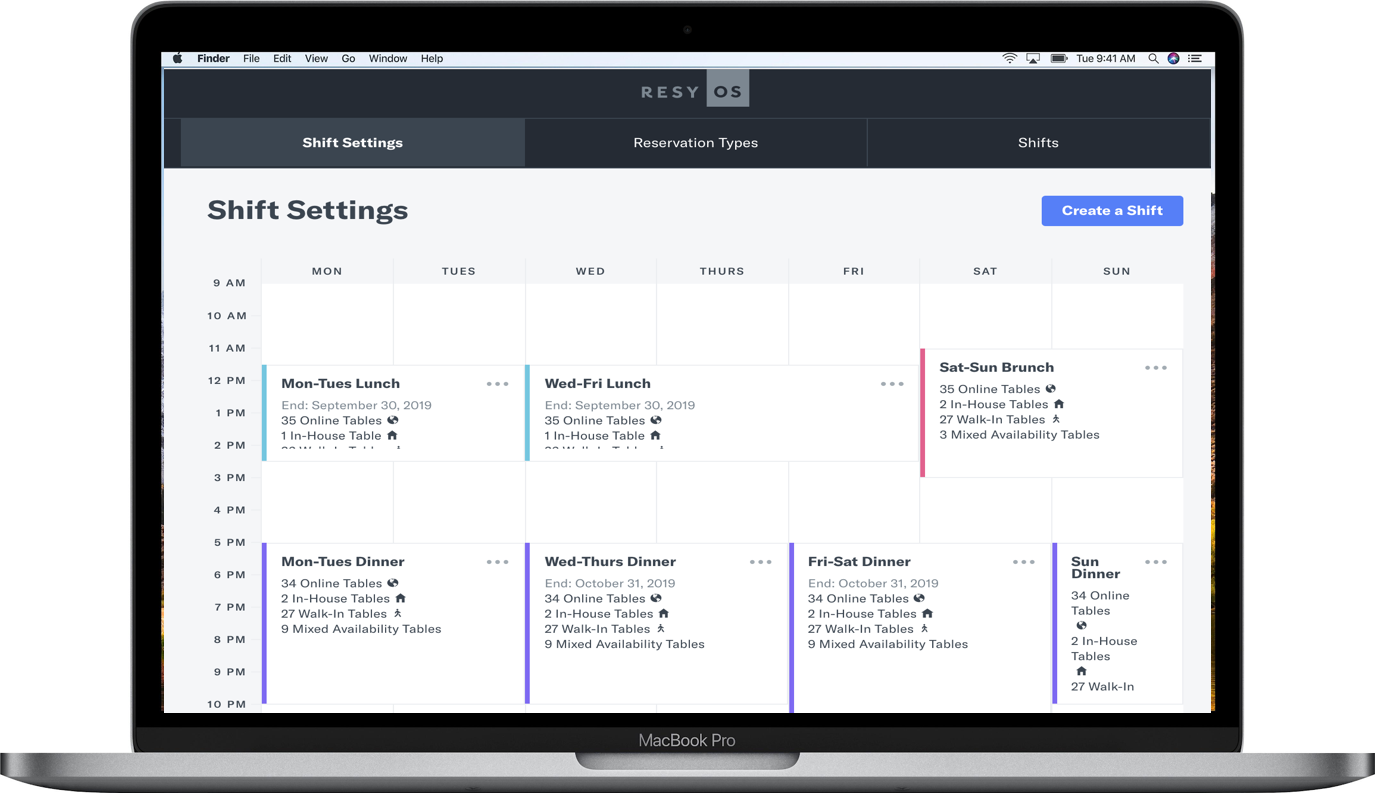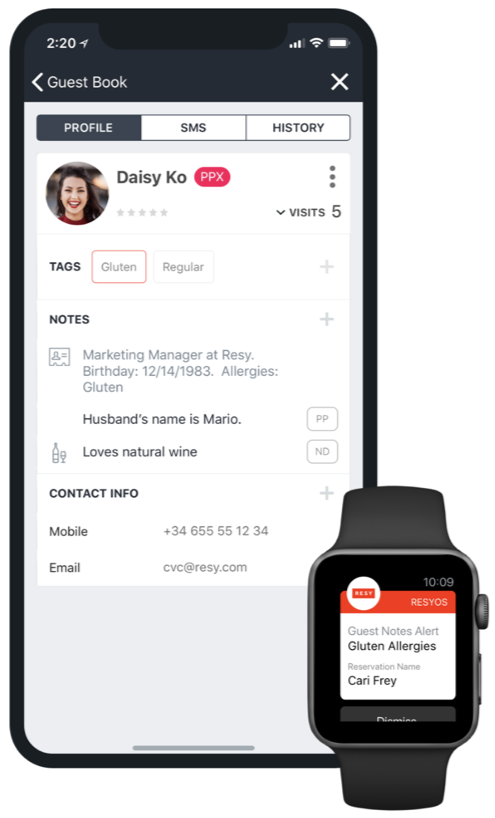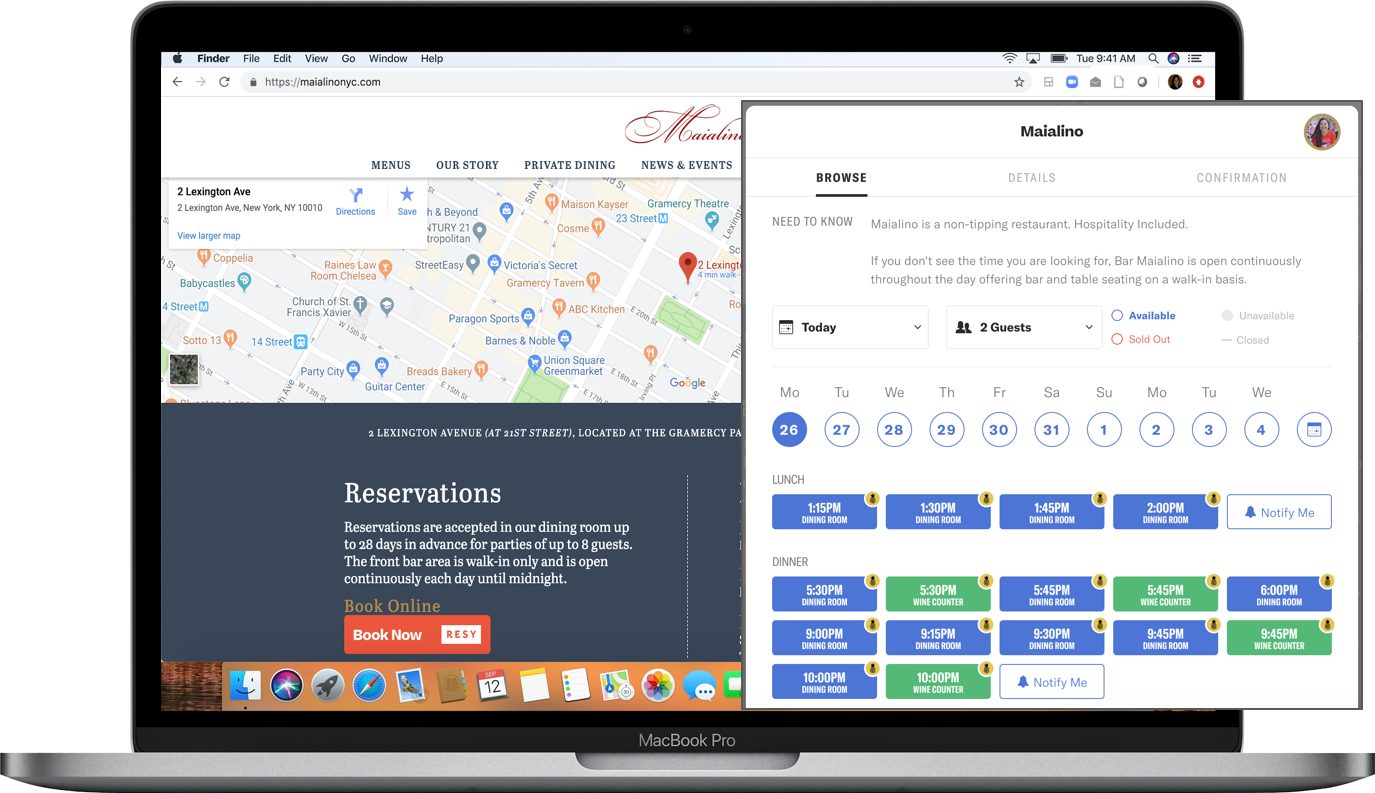Four Tips for Faster Table Turns

As any operator knows, one of the greatest challenges for a restaurant is driving traffic through the doors. But once you’ve gotten the word out about your restaurant, and are starting to attract regulars and newcomers alike, your next big challenge is managing the flow of customers.
Turning tables is like choreographing a dance: you need to maintain a balance between giving your customers a great experience and getting them through their meal fast enough to open up space for your next customers. Diners camping out for too long can be a kiss of death for your sales, as walk-ins –and certainly those with reservations – don’t want to be kept waiting for their table. Using these four tips, you can maximize your sales by fine-tuning your table turns.
1. Refresh Your Shift Settings Often
For restaurants using a reservation system, it’s easy to adopt the “set it and forget it” mentality from Day One. You set up your restaurant’s shifts, floor plan, etc., and never look back. It’s easy to do, since there’s so much on an operator’s plate to handle. But don’t forget that your reservation system shift settings need to be set up to work for you and help your business grow. One significantly important shift setting is ensuring turn times are as accurate as possible. That will ultimately determine the reservation availability guests will see online, and what hosts or reservations teams will see in-house.
First, look at service periods separately. It’s highly unlikely that folks coming in for lunch will be spending as much time in the restaurant as your guests who come in for dinner. Whether they are tourists or employees of the company next door, it’s likely they have something to get back to in the middle of the day.
The days of the week are also not created equally, and neither should the expected turns from a Monday dinner to a Friday dinner. Guests who go out during the week may be thinking about how quickly they can return home and go to bed or finish that last email, but guests on a Friday night may be looking to linger, enjoy the start to their weekend, and even have an extra glass of wine or add dessert.
Resy makes it easy for restaurants to access their turn time data by three layers: party size, service period and day of the week. Operators can easily see that turns for a party of two at lunch on Tuesdays barely hits an hour, while dinner for a party of two on Thursdays averages much closer to the hour and a half mark, and they can make adjustments accordingly to their Tuesday lunch shift turns and their Thursday dinner shift turns.
You can also use this data as seasons turn, and make necessary adjustments based on the changes you see. Even in temperate climates where the weather doesn’t change much, it’s likely that more folks in the summer have flexible schedules, and wish to spend more time in your restaurant than in other, busier seasons.

The more accurately you can display reservation availability, the more guests you can welcome in, as well as reduce the amount of phone calls your team has to field, if the system incorrectly shows nothing as available online. That third or fourth turn you can squeeze in on one or two tables could make or break your bottom line.
2. Prepare for Each and Every Guest
It can be said that masters of hospitality know what their guests want before the guests even know they want it. How could this be possible? Thankfully, in today’s day and age we don’t have to have a crystal ball or a photographic memory, or even rummage through hand-written chicken scratch. That’s why CRM software was created – to help us be proactive for all guests, whether it’s their first time in, they come in once a week, or they dine once in a blue moon.
 Guest notes and tags remain a crucial aspect of delivering hospitality. But how does that fit in with delivering efficiencies? Imagine every time a server made a suggestion on what to order, the guests happily took their suggestion. Guests would save time navigating even a small menu – let alone a lengthy one. There are two valuable tools servers can use to help make better suggestions to help guests make quicker ordering decisions: POS integration (which is offered through Resy) and historical guest notes.
Guest notes and tags remain a crucial aspect of delivering hospitality. But how does that fit in with delivering efficiencies? Imagine every time a server made a suggestion on what to order, the guests happily took their suggestion. Guests would save time navigating even a small menu – let alone a lengthy one. There are two valuable tools servers can use to help make better suggestions to help guests make quicker ordering decisions: POS integration (which is offered through Resy) and historical guest notes.
Resy’s real-time POS integration tracks historical check data in any guest’s profile, if they have made reservations (and kept them) in the past. This will show detailed check items ordered across multiple reservations when applicable. Do they always get the chicken special – or tend toward healthier options? With a POS integration, the server has those insights at their fingertips, and can lead the guest in the right direction on the menu.
At Resy, we also know that when a restaurant transitions, many guest profiles come into our system, with many notes and preferences already listed. Ideally these serve similar purposes to historical POS integration, in that servers can make appropriate recommendations to guests. Resy’s platform also requires guests to create a unique profile that they will use every time they book. The profile proactively asks for information like birthday, allergies and a short bio that could include their dining preferences. Having this information directly from the customer can be crucial, and should not be missed when it comes to delivering hospitality.
Speaking of allergies, many diners today are facing dietary restrictions, but don’t want to be left at home. For example, my husband is very allergic to dairy. When we dine at one of our local restaurants that uses Resy’s platform, when the server comes up to our table, before we’ve said anything they provide us with a special dairy-free menu or a marked up version of the menu – literally with circles and X’s over dishes. Not only does he feel taken care of, and can rest assured he’s not going to eat something he shouldn’t eat by accident, but they just cut off critical minutes of time on a back-and-forth – not only between us and the server, but between the server and the kitchen, in figuring out what he can eat that he’d also be interested in.
But most importantly, how can an operator be sure that the information in the profiles is being looked at? One fairly traditional practice still used today by the top restaurants in hospitality, like STARR Restaurants and J.Alexander’s, is printing chits. Anywhere between one to four chits are likely printed per guest to ensure the host, server, manager and kitchen are all aware of special diner requirements, needs or requests. Resy’s automated chit printing will pop out a chit when there’s something written on the guest’s profile, and it serves as a great last-minute catch-all if, for some reason, the reservation came in late or some of the notes were missed.
3. Speed up the Start and End of Service
A great way to get tables started as soon as they sit down is to have a must-order recommendation of a signature menu item that the kitchen can get started on quickly. Better yet, several Resy partner restaurants have started using the customizable reminder text feature – typically sent 30 minutes to two hours prior to a guest’s reservation – to offer guests an opportunity to have a round of their signature cocktail ready even before they arrive. When the guest confirms, it waits for them upon their arrival.
On a restaurant’s busiest nights of the year – like Valentine’s Day, New Year's Eve, Easter, Mother’s Day – many restaurants now make a prix fixe menu required. This cuts out reviewing and ordering a la carte off the menu, and can help control not only the speed of the kitchen, but also the speed of the diners – as pacing is completely in the kitchen’s control. Many Resy restaurant partners choose to take this one step further, by requiring that prix fixe meals are pre-paid or ticketed upon booking. Not only does this confirm fully that the guest understands the prix fixe menu they are walking into, but it also means that no checks are required at the end of the meal. Guests can just walk right out without the usual process of flagging the server, dropping the check, swiping the card and getting the receipt signed.
If a prix fixe or ticketed reservation is not appropriate for your restaurant, but you want to be sure that every seat – even at the bar, communal tables, or high-tops – is filled, and that there’s no confusion on the guest’s side, you can use a feature now available in most reservations systems today called Table Types. This feature was actually pioneered by Resy in 2014 in our first app launch, and allows you to showcase to diners which section of the restaurant they are reserving. Diners can decide whether they’d take a reservation at a communal table on Valentine’s Day because they are just so determined to spend that special night at your restaurant. This seating area information essentially removes any confusion on the guest’s side (in terms of where the host will take them to be seated) and eliminates negotiation on tables – you’ve already set expectations with the guest, and they know what the experience will be.

4. Create and Follow a SOP
This tip really makes or breaks much of what we discussed earlier. As an operator, you must work with your staff to create a Standard Operating Procedure (SOP), if one does not already exist.
What should be on a SOP? First, make sure servers and hosts are accurately marking tables as “Done” or “Finished” within a few minutes of the guests getting up, in order to ensure that the turn-times data the system is collecting is as accurate as possible. This data, as noted in tip #1, then can help inform changes to your shift settings, in order to ensure up-to-date reservation availability.
Next, make sure servers are working with hosts to enter any and all the guest notes back into the guest’s profiles, so that they show up the next time they dine with you. Resy’s unique identification of guests by their phone number ensures their same profile pops up in the system every time they reserve with you or get added to the waitlist. Never lose a note or tag again! Your servers should have confidence that what they enter is valuable, useful and actionable.
And lastly, be sure to have the staff “clean up” the system at the end of each shift – the same way they do with the physical dining room – to ensure all data is complete and error-free, so operators can make the most informed decisions about all aspects of the business.
About Resy: Resy powers online reservations as part of CHECK® Business Tools. Resy helps your customers reserve tables or join a reservation waiting list easily and quickly online – improving your guests’ experience, and allowing you to share information across all of your restaurants and track your marketing efforts. Learn more about Resy, by visiting Online Reservations in CHECK Business Tools.

